Crafting Pakistani Halwa: A Recipe Guide
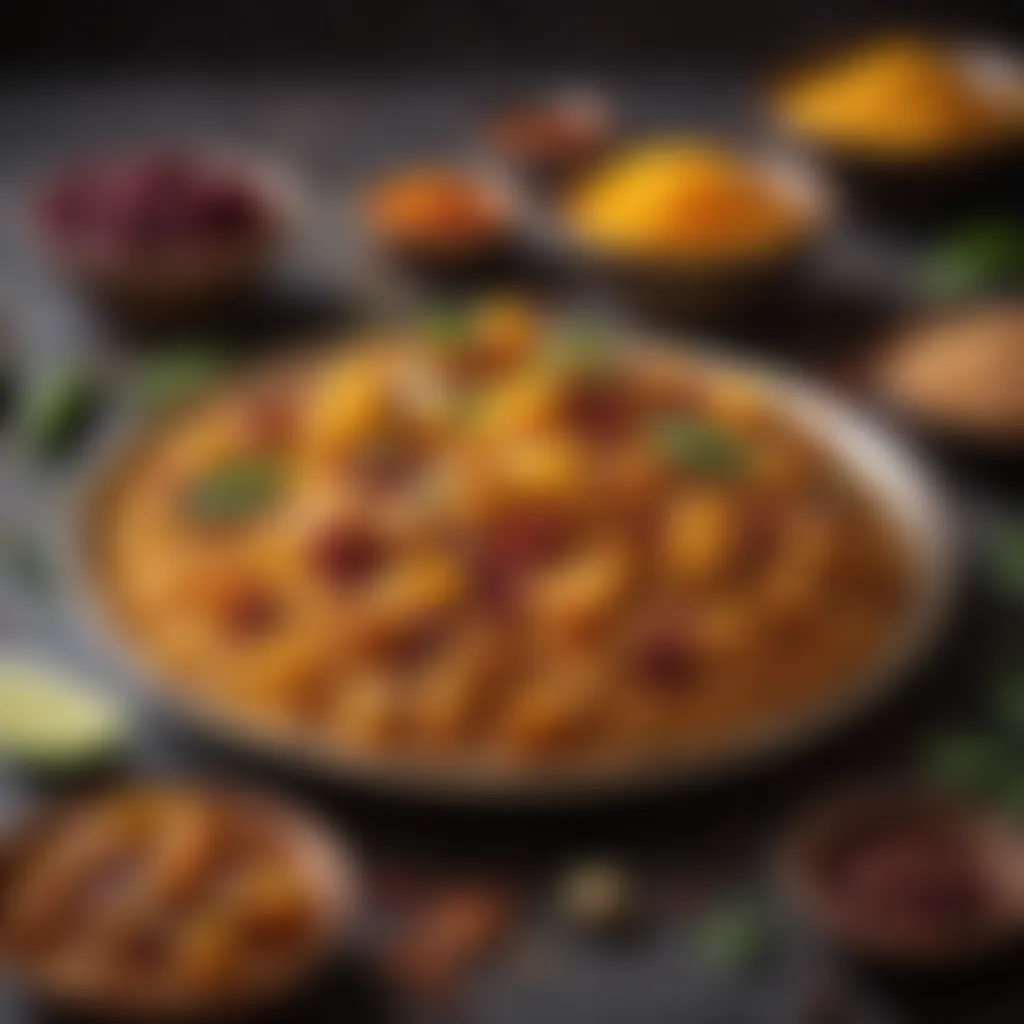
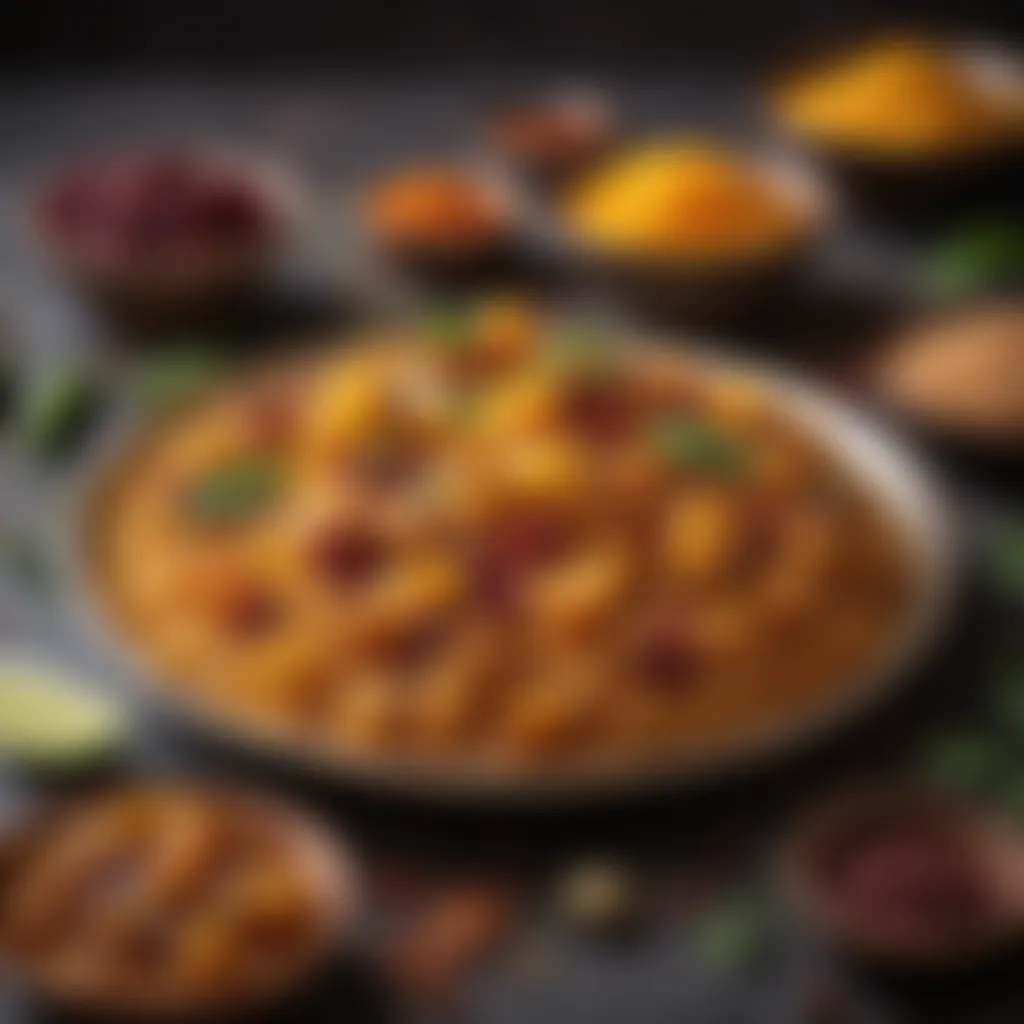
Intro
Pakistani Halwa is not just a dessert; it represents a harmonious blend of tradition and cultural heritage. This delicacy is a staple in many households, often becoming the centerpiece of celebrations and gatherings. The process of crafting this sweet treat is steeped in history, with each region offering its unique flair and ingredients. Understanding its genesis can add a whole new layer of appreciation for every spoonful you savor.
As we embark on this culinary journey, we're not only aiming to delight your taste buds but also to deepen your understanding of this cherished dessert's making. From the selection of the right ingredients to the technical know-how behind achieving that perfect consistency, this guide will cover it all.
In this comprehensive recipe, we will explore the critical components required to create an authentic Pakistani Halwa. We'll detail preparation methods, offer troubleshooting tips, and shine a light on various regional nuances that make this dish universally appealing yet locally unique. Whether you’re an experienced cook or a curious beginner, by the end of this guide, you will have the skills to create a Halwa that’s bound to impress.
Now, let’s get started on our delightful Halwa adventure with the ingredients you’ll need.
Prologue to Pakistani Halwa
Pakistani halwa is not just a sweet treat; it embodies the essence of a rich culinary heritage that has been passed down through generations. This article takes a closer look at the making of halwa, guiding you through its historical significance and its different types found across the regions of Pakistan. These insights will deepen your appreciation for the complexities of this beloved dessert.
Cultural Significance and Origins
Halwa has a history that stretches back over centuries, intertwining with various cultures and traditions. Its roots can be traced back to ancient Persia but found a warm reception in the Indian subcontinent, particularly in Pakistan. In many homes, halwa is synonymous with celebrations—birthdays, weddings, and religious festivities often feature this rich dessert. It signifies hospitality and generosity, as is customary to serve it to guests, likening it to a warm embrace in culinary form.
The significance of halwa extends beyond mere taste; it is woven into the social fabric of Pakistani life. In many regions, families share their secret recipes with pride, turning the act of creating halwa into a communal endeavor. As one stirs the pot, stories and laughter fill the air, showcasing how food can bring people together. Every spoonful carries with it a story, a memory—a connection to cultural identity that runs deep.
Types of Halwa Across Regions
Throughout Pakistan, the varieties of halwa can be as diverse as the regions themselves. Each area infuses its local flavor, ingredients, and methods into their halwa recipes. Here are a few notable types:
- Sooji Halwa: Made predominantly with semolina, this version tends to have a lighter texture and is often enjoyed during breakfast or tea time.
- Gajar Halwa: Particularly popular in the winter months, gajar halwa is made from grated carrots simmered in milk, showcasing a richer taste and vibrant color.
- Besan Halwa: This unique kind uses gram flour as a base. With a nutty flavor profile, it is frequently prepared during Eid celebrations.
- Atta Halwa: Rich in flavor and easy to make, this type employs whole wheat flour as its primary ingredient—it’s great for those who enjoy a denser sweet.
Each variant not only reflects the local palate but serves as a bridge linking personal stories and regional traditions, ensuring that the legacy of Pakistani halwa endures through time.
Essential Ingredients
When it comes to creating the perfect Pakistani Halwa, one cannot downplay the significance of choosing the right ingredients. Each element plays a pivotal role, influencing not just the taste but also the texture and aroma of the final dish. Having a solid understanding of these ingredients ensures that your Halwa embodies its traditional essence while allowing room for personal touches.
Base Components
Semolina
In the realm of Halwa preparation, semolina stands as the foundational pillar. Made from durum wheat, this ingredient brings a distinct texture that can’t be replicated. Semolina’s granularity helps in achieving that pleasantly chewy mouthfeel, which is a hallmark of a well-made Halwa. Additionally, it absorbs flavors beautifully, melding well with the sweet syrup and fragrant spices that are pivotal to the dish.
A key characteristic of semolina is its high gluten content. This feature allows it to bind well, preventing the Halwa from turning overly crumbly. However, unlike regular flour, semolina does offer a slight nutty taste, adding depth to the overall flavor profile, making it a popular choice among cooks.
One unique feature of semolina is its versatility; it can be used for both sweet and savory dishes. In Halwa, you might find yourself asking if there’s a potential downside. Some might argue that semolina requires careful stirring during cooking, as it can easily clump together if not watched closely.
Sugar
Next up, sugar acts as the sweet backbone of any Halwa. This ingredient not only sweetens the dish but also contributes immensely to its texture. When sugar melts into the semolina and ghee, it creates a luscious syrup that envelopes every grain, ensuring that each bite bursts with sweetness.
Sugar’s key characteristic is its solubility, which effectively transforms the dry ingredients into a cohesive mix. It's essential for binding, helping to achieve that gooey consistency Halwa is famous for. Using different types of sugar, like brown or cane sugar, can introduce varying flavors, making it an exciting component to experiment with.
While sugar is crucial, one has to be cautious with the quantity, as overdoing it can lead to an overwhelmingly sweet dish. Balancing the sugar with the right amount of semolina is paramount.
Ghee
Ghee, or clarified butter, is considered the lifeblood of Pakistani Halwa. It enriches the dish, adding not just creaminess but also a deep, nutty flavor that's hard to beat. Ghee has a higher smoke point than regular butter, making it ideal for cooking at higher temperatures, which is often essential in Halwa preparation.
This ingredient’s unique characteristic is its rich aroma, often evoking childhood memories tied to family gatherings and festivals. It helps in achieving that golden hue, making your Halwa visually appealing as well. Moreover, ghee contributes to the luxurious texture, lending a silky mouthfeel.
However, when using ghee, moderation is key. Too much can render the dish greasy rather than deliciously rich. But when balanced, ghee truly elevates the Halwa experience.
Flavor Enhancers
Cardamom
Cardamom is perhaps the soul of Pakistani Halwa, infusing it with an aromatic warmth that captivates the senses. This spice has a distinct flavor profile that is both sweet and savory, enhancing the taste while making it stand out.
One of its most notable characteristics is its ability to uplift even the simplest of ingredients. A couple of crushed pods can transform a dish, bringing it to life. What's more, cardamom has health benefits, including aiding digestion, which is a delightful bonus after a rich meal.
Despite its many advantages, too much cardamom can overpower your Halwa. So, a careful balance is necessary to strike the right note without drowning out other flavors.


Rose Water
Rose water adds a floral touch, making Halwa not just a treat for the palate but also a delight for the olfactory senses. Its gentle essence complements the sweetness, creating a well-rounded flavor that is unmistakably indulgent.
The key characteristic of rose water is its freshness; just a few drops can brighten the Halwa significantly, offering an enchanting aroma that evokes a sense of luxury. It’s particularly popular in festive preparations, linking the flavors back to cultural traditions.
The downside? Like cardamom, too much rose water can tip the balance towards the saccharine. It’s important to approach measurements with caution to retain its beneficial subtlety.
Nutmeg
Nutmeg is a more uncommon yet valuable addition to Halwa. This spice, warm and fragrant, brings complexity to the dish. It enhances the overall flavor profile, offering a spiced note that beautifully contrasts with the sweetness.
What makes nutmeg a beneficial choice is its ability to warm, both in flavor and in terms of health benefits. It’s said to aid in digestion and is rich in antioxidants, making it a wise choice amid the indulgence. Plus, nutmeg's unique characteristic comprises a slightly bittersweet taste that fancifully dances on the tongue.
However, moderation is crucial here, too. A dash too much and it could overshadow the dish. Keeping its presence nuanced is the way to go.
Garnishing Touches
Nuts
Incorporating nuts into Halwa adds an essential crunch that elegantly contrasts with the luscious texture of the dish. Nuts such as almonds, cashews, or pistachios not only contribute a delightful texture but also enhance the flavors of Halwa immensely.
The key characteristic of nuts is their nutritional punch; packed with proteins and healthy fats, they lend a conscience-easing quality to the indulgent dessert. They also add visual appeal, making the dish a feast for the eyes.
While nuts are beneficial, one must chop them to a suitable size; biting into a whole nut can sometimes disrupt the flow of enjoying the dish. Being mindful about this makes a whole lot of difference.
Saffron
Saffron is regarded as the golden spice, and for good reason. Its vivid hue not only elevates the visual presentation of the Halwa but also infuses it with a luxurious flavor. Just a few strands can work wonders, transforming an ordinary dish into one that feels extraordinary.
The unique feature of saffron lies in its rarity and potency; it’s known for its high cost, but that also signifies its quality. The aroma and taste it brings are unparalleled, making it a coveted addition to Halwa.
While saffron is fantastic, it's crucial to use it sparingly. The flavor is potent, and too much can lead to an unusually astringent aftertaste, which nobody wants.
Dried Fruits
Dried fruits like raisins or apricots add a subtle sweetness and chewy texture that round out the Halwa experience. They create a delightful contrast to the creaminess of the base, making each bite interesting.
One of the defining characteristics of dried fruits is their concentrated flavor. When incorporated intelligently, they enhance the overall sweetness without overpowering the dish’s integrity. Plus, they pack additional nutrients, making them a clever choice.
However, careful consideration of the type and amount is essential. Some dried fruits might be overly sweet or tough, becoming unpleasent if not managed well. Keeping it balanced ensures that the Halwa remains a harmonious masterpiece.
Preparation Techniques
Preparation techniques play a pivotal role in crafting the flavorful and aromatic Pakistani Halwa. The methods chosen can significantly affect the taste, texture, and even the appearance of this cherished dessert. Whether you’re opting for traditional stovetop methods or modern shortcuts, the techniques selected will not only influence the final product but also impact the overall cooking experience.
Understanding these preparation techniques allows cooks to embrace the full spectrum of flavors and textures in Halwa. Adapting methods based on available time and equipment can also open doors to creativity, making it possible to experiment with variations and personal touches.
Traditional Cooking Methods
Stovetop Techniques
Stovetop techniques remain the cornerstone of Halwa preparation. This method offers several advantages, including temperature control and the ability to continuously monitor the cooking process. One key characteristic of stovetop cooking is the process of slow roasting the semolina in ghee, a practice that imparts a nutty flavor and rich aroma to the dish.
This technique encourages the cook to engage with the ingredients, allowing them to observe the gradual transformation as they reach the desired consistency. However, it does require patience and attention, as leaving it unattended can lead to overcooking. The beauty of stovetop techniques lies in their ability to enhance the sensory experience of cooking, as the gradual melding of flavors creates an intoxicating aroma that fills the kitchen.
Time Considerations
Time considerations are another vital aspect of Halwa preparation. Traditional methods are usually more time-consuming, allowing for a depth of flavor that comes from careful, unhurried cooking. A key feature here is the slow simmering of ingredients, which facilitates the absorption of flavors.
While a lengthy cooking process can be rewarding, it may not always be practical for everyone. Cooks must weigh the benefits of this method against the need for efficiency, especially in a busy household. One trade-off is the potential for a richer, more complex flavor profile versus the time investment needed.
Modern Alternatives
Pressure Cookers
Pressure cookers have made quite the splash in modern kitchens and offer a refreshing alternative for making Halwa. The ability to cook meals quickly under pressure helps preserve the taste while minimizing cooking time. A major advantage of pressure cookers is that they trap steam, which can infuse the dish with flavors in a fraction of the time it takes when using traditional methods.
However, one should approach this technique with a bit of caution. The pressure cooker can sometimes force the semolina to cook too rapidly, resulting in a texture that might not provide the same delightful bite as the traditional stovetop method. Still, for those pressed for time, pressure cookers allow a balance between getting something delicious onto the table and managing one's busy schedule effectively.
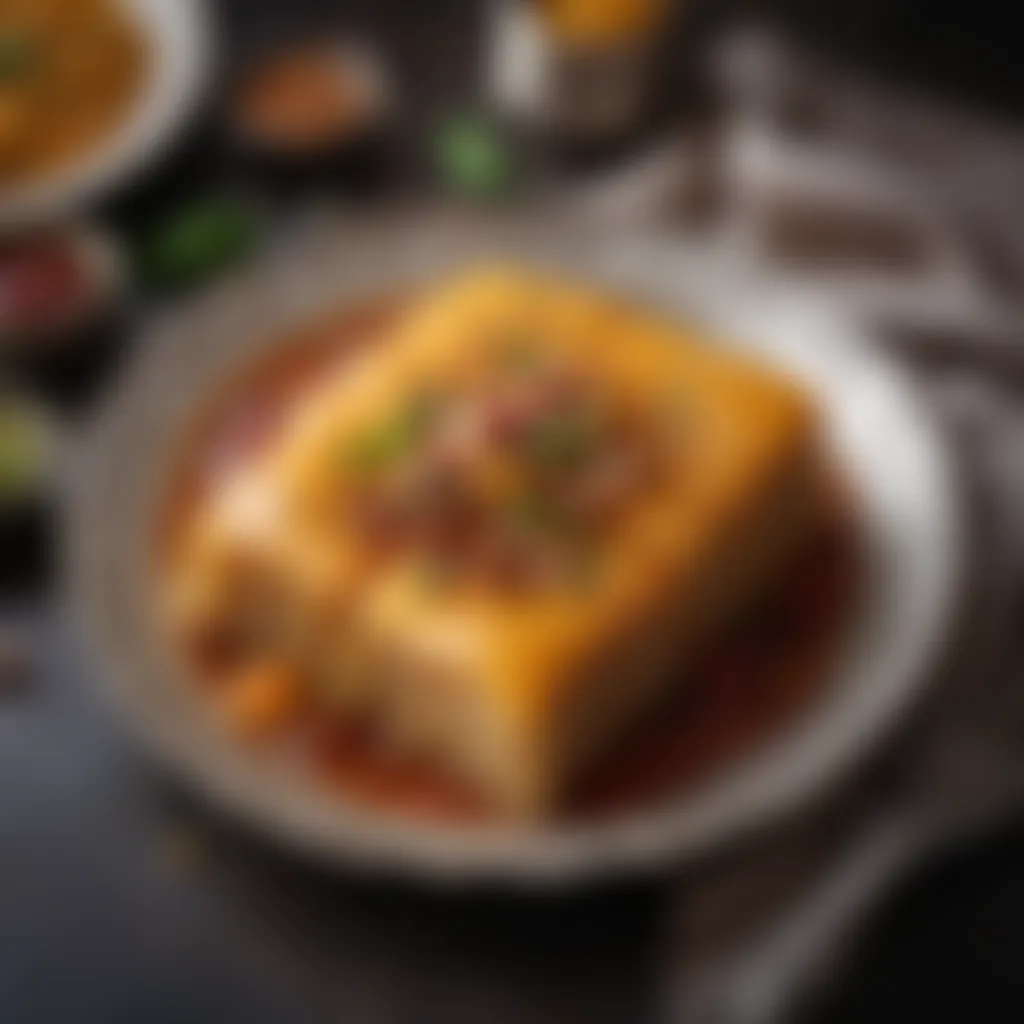
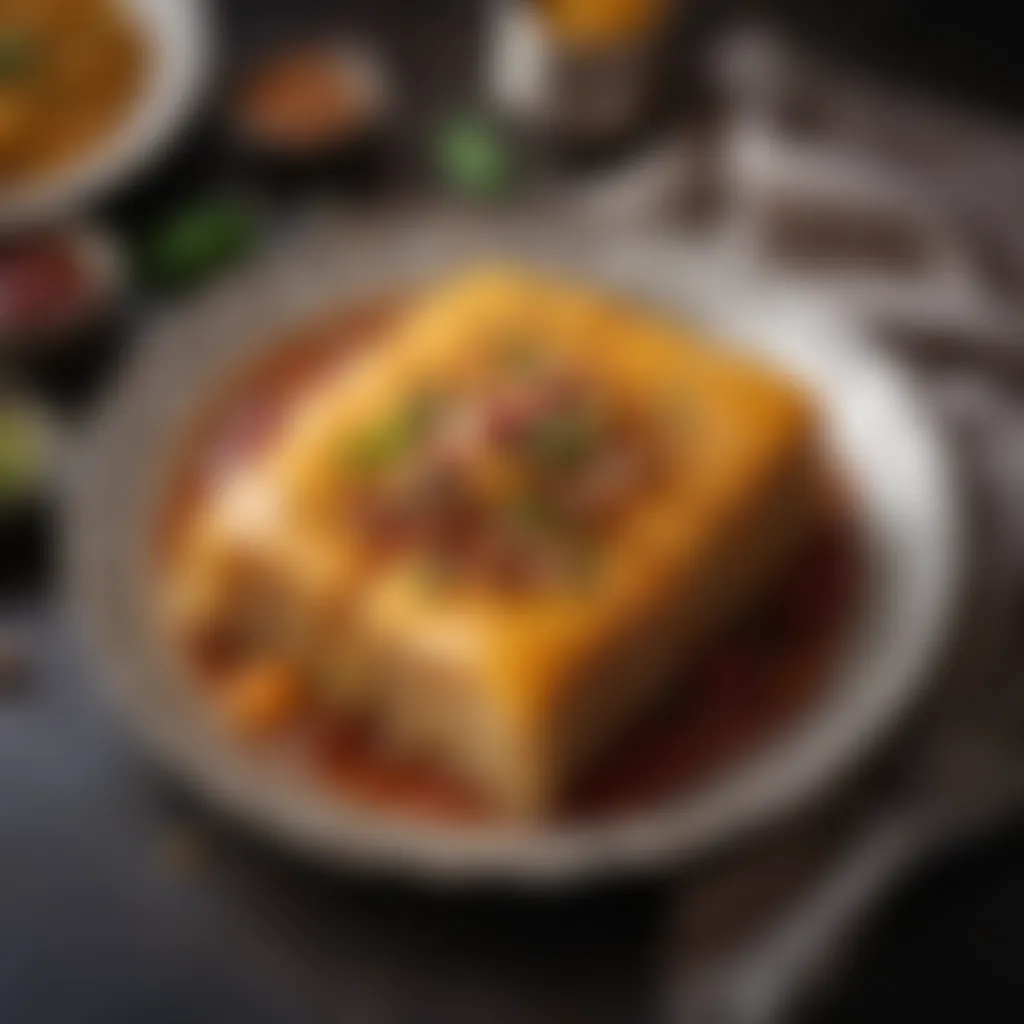
Microwave Options
Microwave options present a convenient solution for those who seek a straightforward path to Halwa preparation. Microwaving Halwa can drastically reduce cooking time, making it appealing for busy homemakers. The key characteristic of microwave cooking is its ability to deliver quick results, allowing you to mix and heat ingredients without the need for constant stirring.
Yet, as appealing as it sounds, using the microwave can lead to inconsistent results. There’s a lack of control over cooking time and temperature, which sometimes results in uneven cooking or a less pronounced flavor. However, with the appropriate adjustments and a little practice, microwave cooking can be a viable option, particularly when time is of the essence.
"The method you choose to make your Halwa not only defines its texture and taste but also reflects your own cooking style. Each technique has its charm—be it the slow nurturing of heat or the swift efficiency of modern tools."
In summary, whether you lean towards traditional methods or modern alternatives, understanding preparation techniques enriches the cooking experience and enhances the end result. Make sure to select the one that fits your family's needs and schedules while keeping the joy of cooking at the forefront.
Step-by-Step Recipe
The beauty of crafting Pakistani Halwa lies not only in its rich flavors but also in the meticulous steps involved in its preparation. A step-by-step approach provides an essential framework. Each stage builds upon the previous one, ensuring that the final product is a representation of both tradition and culinary skill. Breaking the process down makes it approachable for anyone, especially those who might be new to this sweet dish. By following these structured steps, one can enhance their efficiency in the kitchen while minimizing the margin for error. This methodical pathway aids in elevating the cooking experience and demystifying what might seem complex at first glance.
Gathering Ingredients
Before one can embark on making Halwa, it is critical to gather all necessary ingredients. Preparing halwa can often be a spontaneous decision, much like a chef deciding to whip up a quick dish based on what's in the pantry. This is where a little pre-planning can come in handy.
Here are the staples one should consider:
- Semolina or another base of choice
- Sugar
- Ghee, which brings richness and flavor
- Flavor enhancers like cardamom and rose water
- Optional garnishes like assorted nuts or dried fruits
Ensuring that all the ingredients are available before beginning the cooking process allows for a focused flow. Plus, it keeps one from running around in a panic halfway through the recipe, searching for that elusive packet of saffron.
Cooking Process
Creating the Base
The base of Halwa, typically made from semolina, is vital to the overall texture and flavor of the dish. Choosing the right base is crucial; semolina is popular because it caramelizes beautifully, giving the final product its golden color. The moisture content is just right, allowing the dish to hold together without becoming too dense or falling apart.
One unique feature of semolina is its versatility. It pairs well with various flavors without overpowering them. However, it's important to monitor the heat closely while cooking; too high could lead to a burnt base, while too low could result in a soggy texture.
Incorporating Flavors
This step is what truly elevates Halwa from simple to sublime. Incorporating flavors involves skillfully blending spices and other ingredients that harmonize with the base. Using ingredients like cardamom adds depth, while rose water gives a floral hint that echoes through each bite. The balancing act of these flavors can make or break a batch of halwa.
What’s beneficial about this step is the freedom it allows. Cooks can experiment with different ratios of spices to find their preferred taste. However, caution is advised when adding strong flavors—too much can overshadow the delicate notes of the halwa.
Achieving Ideal Texture
Textural development is often overlooked but is essential for a satisfying halwa. Each cook’s touch will differ; some may prefer it creamier while others might lean towards a firmer consistency. Proper stirring and watching for the right consistency are key. As it cooks, one should pay attention to visual cues. A perfectly made halwa has a glossy appearance while retaining moisture without being overly wet.
This stage also allows for adjustments. If you find your halwa becoming too dry, a bit of milk can help bring it back to life. On the flip side, if it’s too runny, further cooking can reduce excess moisture.
Serving Suggestions
Once the halwa has reached its peak, serving is the next step. It's customary to present halwa warm, garnished with a sprinkle of nuts, a hint of saffron, or a drizzle of rose water. Arranging it on a decorative plate or in bowls can elevate the whole experience. Some people enjoy pairing halwa with a side of fresh fruit, adding a refreshing contrast to the rich sweetness.
"Cooking is like love. It should be entered into with abandon or not at all." - Harriet Van Horne
The art of preparing halwa beckons everyone to bring joy through thoughtful cooking, so don’t rush it.
Variations of Halwa
When it comes to Pakistani Halwa, variations are as rich as the culture it stems from. Exploring these variations not only allows for a delightful culinary adventure but also showcases the diverse ingredients and traditions that define different regions. Each type of Halwa has its own character, drawing on local produce and methods that enrich the overall experience.
Gajar Halwa
Gajar Halwa, or carrot Halwa, is a popular dessert particularly in the winter months when fresh carrots are plentiful. This Halwa marries grated carrots with sugar and ghee, culminating in a mouthwatering sweet that is often garnished with nuts and sometimes even a hint of khoya. The key to a good Gajar Halwa is patience; cooking the grated carrots over low heat helps to achieve that melt-in-your-mouth consistency. The warmth of cardamom mingling with the natural sweetness of carrots is a fan favorite. )
- Ingredients: Fresh carrots, sugar, ghee, cardamom, nuts.
- Cooking tip: Use a heavy-bottomed pan to avoid burning.
Besan Halwa
Besan Halwa is often prepared during festivals, celebrated for its rich nutty flavor that comes from roasted gram flour. Made with besan, sugar, and ghee, it often features an enticing aroma thanks to the added cardamom. While making this Halwa, toasting the besan until aromatic before adding ghee is crucial. It requires careful attention, as failure to roast it long enough could lead to an unsatisfactory end product.
- Ingredients: Gram flour, sugar, ghee, and cardamom.
- Serving suggestion: Pair it with a dollop of fresh cream for a decadent twist.
Atta Halwa

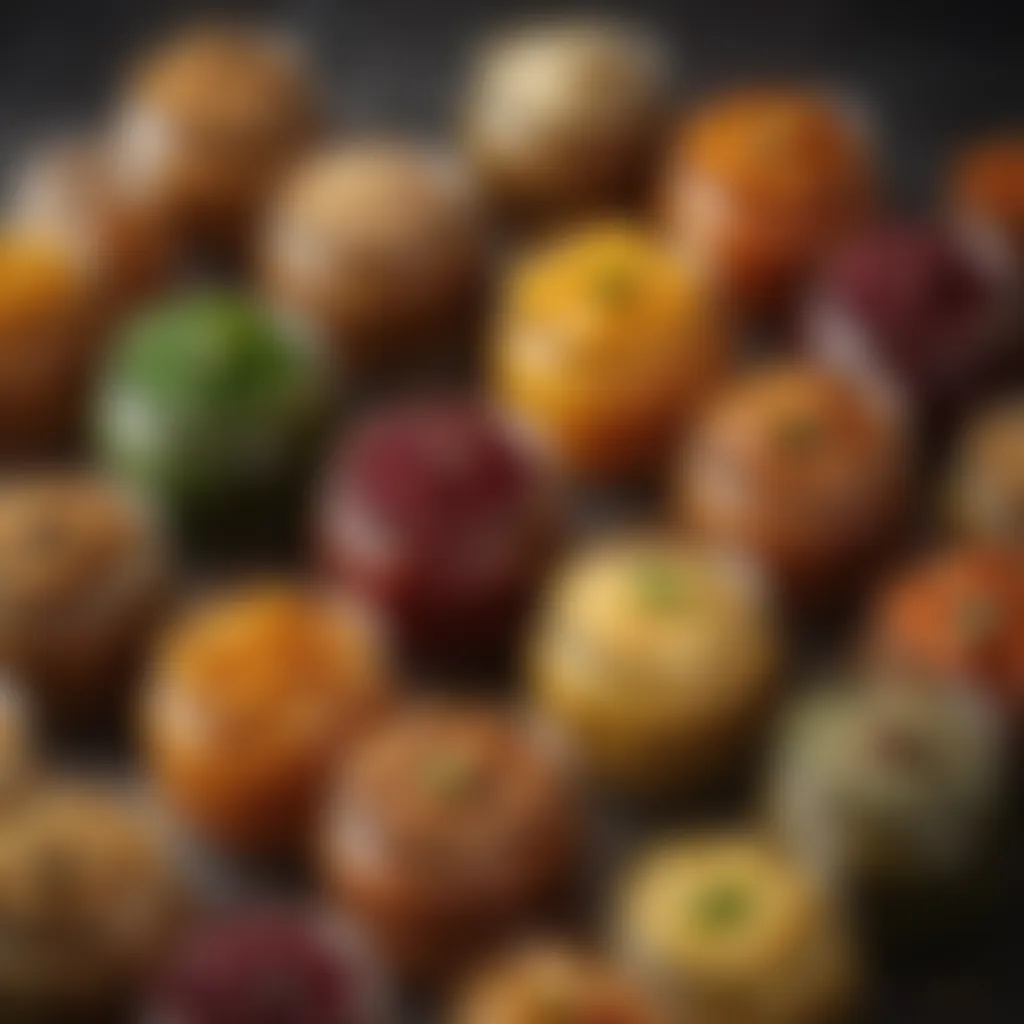
Atta Halwa, made from whole wheat flour, offers a unique flavor profile that distinguishes it from its counterparts. This variant is simple yet comforting and is a fantastic choice when one desires a warm, homely dessert. The preparation is straightforward: roast the flour in ghee until fragrant, then blend in sugar and water or milk for the desired creaminess. The use of nuts not only adds texture but elevates the Halwa’s visual appeal.
Tip: Always roast on moderate heat; burning can lend a bitter taste to the final product.
- Ingredients: Whole wheat flour, sugar, ghee, and assorted nuts.
- Cultural note: Often enjoyed during special occasions or as a festive dessert, Atta Halwa remains a staple in many households.
Understanding these variations invites home cooks to experiment and adapt recipes that best fit their own tastes and cultural context. Each Halwa variation serves as a delicious reminder of the creativity and resourcefulness found within Pakistani kitchens.
Common Mistakes in Halwa Preparation
Creating the perfect Halwa is as much an art as it is a science. Yet, even the most seasoned cooks can stumble into a few traps that lead to less-than-desirable outcomes. Understanding these common mistakes not only elevates your culinary skills but also adds a layer of confidence to your cooking process. Every detail counts; proper execution can distinguish a delightful Halwa from a clumpy disaster. Let's delve into some critical pitfalls to avoid, as well as the insights to help navigate through the glorious world of Halwa preparation.
Overcooking
Overcooking is perhaps the swiftest road to ruining your Halwa. It might seem innocuous to let your dish simmer a little longer, especially when you’re multitasking in the kitchen, but too much heat can lead to dry, unpalatable results. Halwa done right should be rich, gooey, and bursting with flavor.
The key here is to keep an eye on your texture. As the cooking progresses, your Halwa will begin to change from liquid to a denser form. Once you start seeing bubbles, it’s time to stir with careful consideration. If you notice that the edges are browning too much, lower the heat.
"Cooking is like love. It should be entered into with abandon or not at all."
Avoid the temptation to walk away during this crucial stage. A few minutes can turn a silky, indulgent treat into a disheartened lump of grain. When you think your Halwa is done, do a taste test to gauge its consistency and flavor. Remember, the aim is to achieve a velvety texture that melts in your mouth.
Incorrect Ingredient Ratios
Following a recipe for Halwa is essential, but knowing when to adjust ingredient ratios to suit your style is just as important. Each ingredient plays a role in achieving the desired flavor profile and texture. When ratios are off, the results can vary from sickly sweet to bland, and the texture might turn sticky or crumbly instead of that lush and moist texture that Halwa ought to have.
- Semolina to Ghee Ratio: Too much semolina could make your Halwa dense, while skimping on ghee results in a dry outcome. Finding the sweet balance is essential for that rich mouth-feel.
- Sugar Measurements: Using too much sugar will not only hinder the actual flavor of Halwa but will also affect its consistency. Conversely, not enough sugar can leave it underwhelming. A pinch too much or too little can lead to disappointment.
- Flavors and Enhancers: Under-seasoning or over-seasoning with cardamom or nutmeg can also interfere with the final taste. It’s best to start small and adjust according to your palate.
Being mindful of these ratios and adjusting them to fit your requirements can take your Halwa from ordinary to exceptional. For instance, if using dried fruit or nuts, consider their natural sweetness when balancing your sugar content.
In summary, with a little care, avoiding these common mistakes can ensure that your Halwa not only meets your expectations but surprises your taste buds, embodying the sweet tradition it represents.
Nutritional Aspects of Halwa
Understandably, in the realm of desserts, halwa often raises eyebrows. Is it merely a sugary indulgence, or does it bear any nutritional worth? This section dives into just that, offering insight into the caloric values and potential health benefits associated with this popular dish. Knowing the nutritional aspects can not only enhance your appreciation of halwa but also aid in making informed choices while preparing and serving it.
Caloric Values
Halwa's caloric content can vary significantly based on its ingredients and preparation method. A typical serving of gajar halwa, for instance, might pack around 200 to 300 calories. However, consider that this is mainly from the ghee, sugar, and any dried fruits you might toss in for good measure. While halwa does provide energy, one must also be cautious about portion sizes.
Here’s a breakdown of caloric values based on common halwa types:
- Gajar Halwa: Approximately 250–300 calories per serving.
- Besan Halwa: Roughly 300-350 calories due to the chickpea flour and added ghee.
- Atta Halwa: About 200-250 calories, but can rise significantly based on sweetener amounts.
Portion control is key; a bit of this dessert can go a long way in satisfying your sweet tooth while keeping calorie counts in check.
Potential Health Benefits
While enjoying halwa certainly comes with its sugar and caloric concerns, it's not all doom and gloom. When made with care, it also brings certain health benefits to the table. Here’s what makes right ingredients beneficial:
- Ghee: Often feared due to its fat content, ghee can actually help in digestion and provide a good source of energy. When consumed in moderation, it may also promote heart health.
- Nuts and Dried Fruits: These add not just flavor but also essential nutrients. For example, almonds are known for their vitamin E content, while raisins can provide a quick source of energy on those busy days.
- Cardamom: This sweet spice isn’t just aromatic; it’s packed with antioxidants, which can aid in detoxifying the body and boosting metabolism.
- Semolina: Found in many variations, semolina is a good source of proteins and fibers, which can help keep you satisfied longer.
The End
In wrapping up our exploration of Pakistani Halwa, it’s crucial to emphasize not just the culinary techniques but also the rich culture embedded within each sweet morsel. The process of crafting Halwa is as much about the ingredients and methods as it is about the memories and moments it creates.
Reflections on the Craft
Making Halwa isn’t simply a matter of following a recipe; it's an intricate tapestry of tradition and personal expression. Every household may have its unique twist on the dish, often influenced by regional ingredients or family stories. When you stand in the kitchen, stirring the mixture and smelling the fragrant cardamom and ghee, you’re connecting with a legacy that stretches far beyond mere cooking.
Hearing stories from family elders about their experiences with Halwa often ignites a passion in new cooks. It’s not rare to find a daughter learning alongside her mother, sharing tips and secret ingredients that have been passed down through generations. This bond reinforces the importance of Halwa not just as dessert, but as a vessel for culture and familial love.
Furthermore, as you prepare and serve Halwa, you're not just presenting a dish; you're offering a piece of your heritage. Whether during celebrations or everyday meals, Halwa can evoke nostalgia and foster connections.
Future Trends in Halwa Making
Looking to the future, we see a fascinating upsurge in creativity surrounding Halwa. While traditional recipes are cherished, innovative variations are beginning to emerge. Contemporary culinary trends are increasingly emphasizing health consciousness, leading to adaptations like using less sugar or incorporating alternative sweeteners.
Moreover, with the rise of home baking and cooking shows on platforms like Facebook, more individuals are eager to experiment. From gluten-free versions using almond flour to vegan substitutions for ghee, the world of Halwa is expanding beautifully.
People are also exploring fusion recipes, combining Halwa with other dessert influences from around the globe. Imagine Pista Halwa cheesecakes or Halwa cupcakes gracing your dessert table; these are no longer just dreams but are becoming the norm!
In essence, as we continue to cherish and create Halwa, the craft intertwines with modern influences while retaining its core values. It stands as a reminder that while traditions are worth preserving, innovation and adaptation can elevate those cherished recipes into new realms of delight.
"Cooking is like love; it should be entered into with abandon or not at all." - Harriet Van Horne







